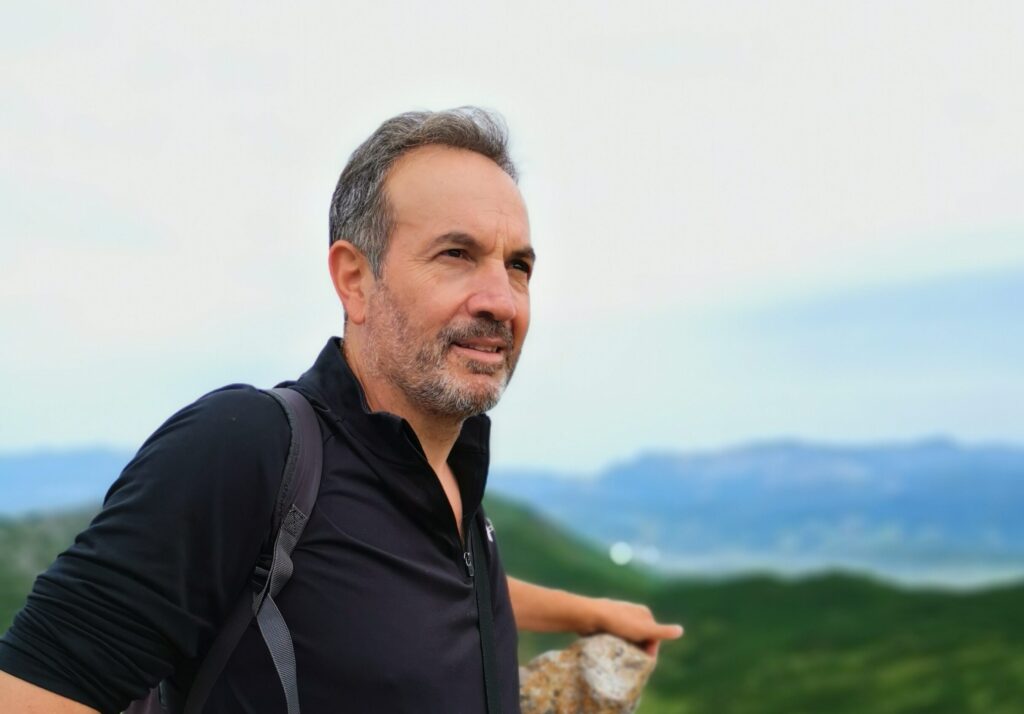
Fernando shares his lung transplantation journey, his role in advocacy and his hopes for the future.
I was 37 when I was diagnosed with advanced pulmonary emphysema due to alpha-1 antitrypsin deficiency (AATD). It was a shock to receive the news that I might only have a few years to live at such a young age.
I began home oxygen therapy 24 hours a day. I struggled to breathe when exerting myself, had persistent coughs and constant fatigue. All daily activities felt like running a marathon. Walking, eating, laughing, and even speaking, were a challenge. I tried to do more complicated tasks, like bathing, dressing or walking longer distances, when someone was around to help. In the year before my transplant, I had to sleep sitting in a recliner because lying down made it almost impossible to breathe.
Over time, I became aware that a lung transplant was the only option I had to survive.
I wish a transplant could be an opportunity for everyone, no matter the country they live in. In my country, the only lung transplant centre available considered me too high- risk for its level of experience. I contacted other patients who had been transplanted abroad and they shared their experiences with me. This helped me find a transplant centre abroad that would accept me.
Finally, after a true race against time, on June 9, 2011, I underwent a bilateral lung transplant surgery in another country. When I was transplanted, I had been hospitalised for nearly six months with recurrent pneumothorax and respiratory infections. With a sudden deterioration in my condition, I fell into a coma for the last three days, which moved me to the top of the transplant priority list. Alerts were issued in Spain and Portugal for the first compatible lungs to be sent to me.
In the first few days after the transplant, I was still at risk due to major haemorrhages. After a few weeks, I had complications with the bronchial anastomosis, which required several surgical interventions. I lost a lot of muscle mass, which was a huge challenge to recover. I couldn’t stand on my own, let alone walk. I had to undergo intensive physiotherapy and exercises for some time to regain my mobility. Every step I took was a victory.
Since I hadn’t known what it was like to live without restrictions for several years, it was easy for me to accept the rules and the limitations of isolation. However, I was eager for this period of containment to end. I had to relearn how to live with the new rules that a transplant requires.
At first, I was afraid something might go wrong—that my body might reject the new organ. Over time, even though I developed bronchial stenosis as a complication of the lung transplant, these fears decreased.
My greatest wish is for significant scientific progress to minimise the risks of lung transplants, reduce the side effects of immunosuppressants and therefore increase the life expectancy of transplanted individuals.
Even with all the setbacks, the transplant felt like a rebirth. It was the ability to breathe without thinking, breathe without pain, breathe without being out of breath. Step by step, I started doing basic activities on my own again and regained my independence.
Years later, after an invitation from the Spanish Alpha1 association, I challenged myself to walk the Camino de Santiago. It was an unforgettable experience. It marked the culmination of my rehabilitation and my full return to life.
Throughout this process, family is essential for support, guidance and adaptation to this new life. Without my wife and children, I probably wouldn’t have been able to overcome the difficulties.
My message to all those waiting for a lung transplant is: It is far better to choose to truly live, rather than merely survive.
Today, I feel that I have a mission. I am the president of AA1P, an association for patients with AATD, and I seek to help patients who are going through the same struggles I faced.
In addition, I am deeply grateful to the donor every single day, along with all those who granted me this second chance at life… this precious second life.
We worked with ERN-LUNG to produce a downloadable booklet sharing patients’ perspectives on lung transplantation. It highlights patient journeys and calls to action for improvements in the field.
Learn more